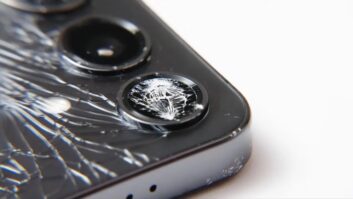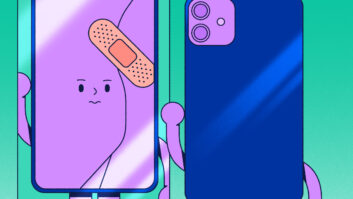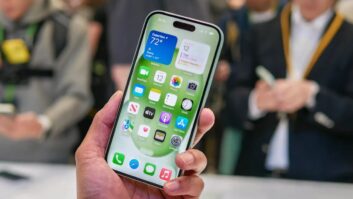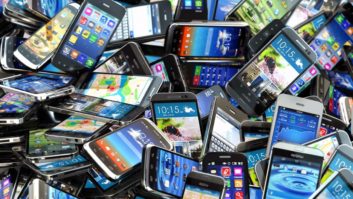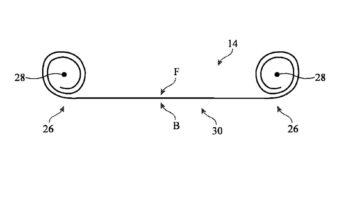The new iPhone’s feature enhancements, openness to third-party applications and AT&T-subsidized starting price of $199 will put heavy pressure on the sales and prices of other-brand smartphones, and that’s bad news for consumer electronics retailers who continue to be excluded from the iPhone’s distribution channels, said analysts and retailers.
The $199 and $299 iPhones will also have an impact on retailers’ sales of the iPod Touch, which uses the same touchscreen interface as the current iPhone and costs close to $300, said Bonny Joy, device strategies analyst for Strategy Analytics.
To compete with the 3G iPhone, retailers will have to polish up their salespeople’s qualification skills so they can point out the growing number of iPhone alternatives that offer touchscreens, high-speed data, multimedia playback and email, retailers and analysts said. Competing carriers will likely sharpen their smartphone prices and begin promoting their array of alternatives, they added.
Already, Verizon Wireless announced plans to launch three new LG multimedia phones, including an all-touchscreen LG Dare due sometime in June. The others are the LG Decoy, due June 16 with detachable Bluetooth headset, and the LG Chocolate 3, a flip version of the Chocolate slider. It’s due in July with embedded 1GB memory, memory card slot and FM transmitter to broadcast music to a nearby radio.
“Anytime there is a big swing in price for a better product, it causes some short-term agita,” said Kevin Sinclair, president/CEO of Wireless Zone, a 286-store franchise company that exclusively sells Verizon Wireless service. “Other carriers will do what is common: step up based on pricing and work with other manufacturers to launch new products with the same features to compete,” he said.
For its part, Wireless Zone “will make sure store owners and salespeople understand the options,” Sinclair said.
Springfield, N.J.-based Sixth Avenue Electronics is also ready to compete. “It’s going to eat into some sales, of course,” said Tom Galanis, operations VP. “A $199 iPhone is pretty attractive, but I wouldn’t count everyone else out yet.” He pointed out that “people are loyal to certain carriers. They may be with Verizon and like their service and may choose the BlackBerry.”
Said Kevin Burden, ABI Research’s mobile technology director, “At these price points, iPhone has gone from being out of reach to very attainable and compares well from a feature and desirability standpoint against any smartphone currently on the market.”
For independent wireless retailers, including big-box retailers, Yankee Group analyst John Jackson said, “It’s pretty clear this is bad news.” The $199 8GB and $299 16GB versions of the iPhone are “priced to move volumes and move the market.”
The launch, however, won’t affect all smartphones equally. The hard QWERTY keyboards of most BlackBerry models and many other smartphones will likely continue to appeal more to heavy email senders than an iPhone’s touchscreen, said ABI’s Burden, whereas folks who mainly use their phone to read emails might gravitate to the iPhone’s touchscreen.
The biggest impact on BlackBerry sales will be in consumer-oriented rather than enterprise-oriented products where maker Research In Motion is focused, added Joy of Strategy Analytics. In fact, he said, “all consumer-oriented smartphones will be affected.” With the iPhone’s affordable price, he added, “The iPhone will compete not just with smartphones but with feature phones.”
Joy has lifted his estimates of 2008 North American iPhone sell-through to 6.5 million units with the launch of the new iPhones from an earlier forecast of 5.1 million.
As a result, new and previous-generation iPhones will account for 6.5 million of the 30 million smartphones forecast to sell through in North America in 2008, Joy said. That’s up from 2007’s estimated iPhone sell-through of 2.8 million and total smartphone sell-through of 18.3 million. iPhone’s share of smartphone sales will thus rise to 22.2 percent from 15.3 percent.
Although other-brand smartphones will continue to rise, competing carriers and handset vendors will take notice of the iPhone’s potential impact on their sales, Joy continued. “The primary reason for the [AT&T-subsidized] price reduction is to get consumers to switch to AT&T,” Joy contended. And the customers sought by AT&T “are the best customers of the other carriers.” As a result, “I expect significant subsidies on smartphones [by other carriers] to stop the erosion of customers,” he said.
Despite the potential impact on sales of other-brand phones, some retailers see an upside. Gregg Kuperstein, Wireless Toyz president and COO, called the new iPhone “incredibly positive for the industry because the device, as with its predecessor, will continue to create greater awareness and overall demand for feature-rich phones.” In addition, he said, “other handset manufacturers have continued pushing their own boundaries by regularly introducing more versatile and innovative handsets. These introductions benefit all retail channels. The consumer interest they have spurred has led to sharply increased sales because the appeal of feature-rich devices has moved beyond business professionals to a mainstream audience that includes virtually every other customer segment.”
The new iPhones will be sold only through Apple stores and more than 2,200 AT&T-operated stores and kiosks. AT&T will remain the exclusive U.S. carrier for the iPhone, although unlike before, the carrier will subsidize handset prices as carriers traditionally do.







